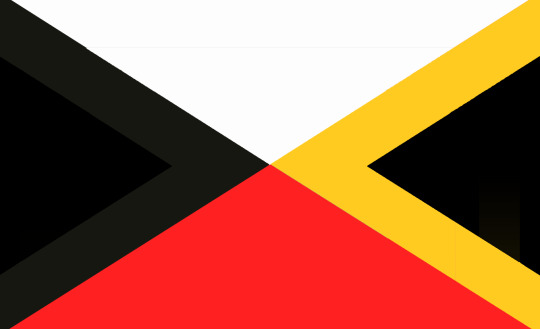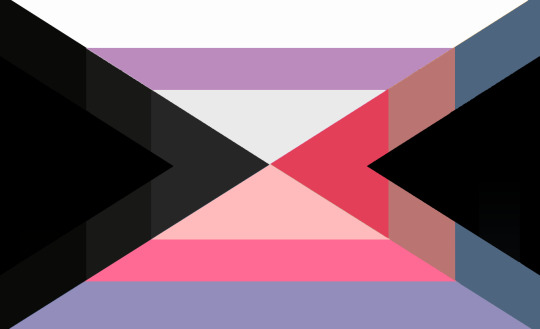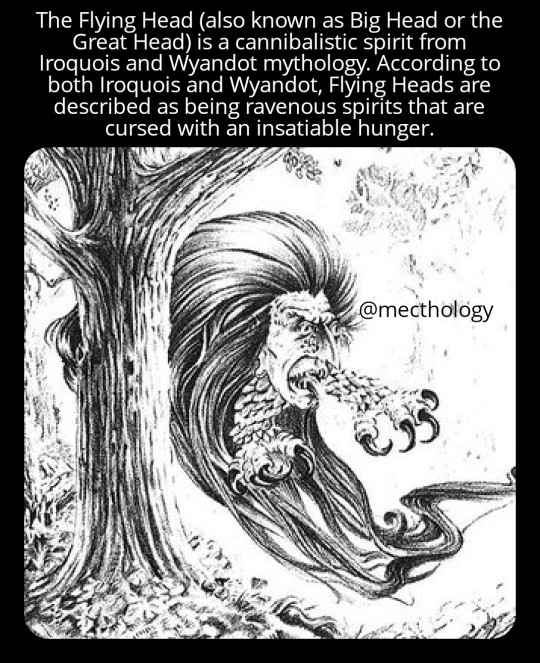#iroquois
Text
A Swiss museum has returned two sacred artifacts to the Haudenosaunee (Iroquois) confederacy.
The objects — a medicine mask and turtle rattle — had been in the possession of the Geneva Museum of Ethnography (MEG) for nearly 200 years.
Mohawk elder and activist Kenneth Deer was one of three men sent to retrieve the objects.
He says he was "surprised and thankful" for the museum's co-operation and called the MEG "progressive" for returning the objects without conditions or complications.
The museum held a ceremony in Geneva on Feb. 7 to mark the first time that the MEG returned a sacred object to its rightful owners. [...]
Continue Reading.
Tagging: @politicsofcanada
2K notes
·
View notes
Text

Dillon Aero's 1968 UH-1H at the Coolidge Airport Breakfast Fly-In, Arizona
#Dillon Aero#Vintage aircraft#Bell#UH-1#Huey#Iroquois#UH-1H#helicopter#aviation#aircraft#Helo#Chopper
46 notes
·
View notes
Text

Yoshimoto nara inspired . 2023 december.
#artsalot quest!#indigenous#indigenous art#native#Native American#ribbon skirt#haudenosaunee#Iroquois#.txt#Yoshimoto Nara#Yoshimoto nata inspired#inspiration#disability#cripplepunk#disabled art#actually disabled
24 notes
·
View notes
Text
The European colonization of North America wasn’t a quick process. It took over 800 years and featured centuries of bloodshed between the First Nations and European invaders.
20 notes
·
View notes
Text

Still standing. 🪶🟧🟫💨
#first nations#american indian#native american#native people#native americans#First Nation#basquiat#peace pipe#standing rock#sioux city#sioux#crazy horse#sitting bull#Navajo#Apache#iroquois#lakota#south dakota#folk art#pow wow#teepee#water protectors#wounded knee#trail of tears#comanche#seminole#Foxwoods#red skins#mount rushmore#jean michel basquiat
15 notes
·
View notes
Text



Copypasting from my toyhouse because I think it might reach more people on tumblr, too!
Hi everyone/she‧kú swakwe·kú! For any natives and those interested, I read that people can just make their own flags if need be so since I've been struggling with finding if I'm ace/demi/pan/bi/non-binary/demigirl, etc. I thankfully was welcomed into the two-spirit community on my reservation and felt more comfortable identifying as two spirit with the experiences with myself and the other parts I don't always identify as, so I thought I'd share my personal flag in case any other two-spirit natives might be interested in using it, too!
I am still learning, so please do not be hurt or upset if you feel this isn't representative, but I'll paste what I told my friends.
Two spirit usually can identify as any of the lgbt+ or multiple identities/two spirits for natives, so I have trans/nonbinary for red, bi/gay/les for yellow, ace/demi/etc for white, and the dark grays for those not represented for black, which are the four colors/directions of the medicine wheel---basically, gender for red, sexual/romantic orientation for yellow, ace spectrum for white, and other for black. It's my personal flag but other two spirits can use it ofc
I found it fit the best for me because bi covers the bi umbrella (pan/masc/fem/etc preference) the trans umbrella includes male/female/nonbinary, and demi/ace spectrum both share the same colors of asexuals, demisexuals, non-asexual partners and allies, and community, and the dark grays for what I may have missed/isn't represented. The two black arrows represent the two spirits or multi-directions. I used to study the pride flag color meanings a lot cause I WAS TRYING TO FIGURE OUT WHAT I WAS and I loved that the trans and bi and ace flags covered masc + fem, + everything in-between + nothing at all for both gender and sexual/romantic preference and this is what made me comfortable.
That aside, happy pride month! I'm slowly getting more comfortable with my identity, and just want to remind everyone, it's okay if you need to search and wonder for a bit, or don't know for certain, or end up changing your orientation when life things come along. I found out I was bi through talking with my friends on attraction, realized I was more comfortable associating myself as ace, and then found out about demisexual which made me even more excited because for years I used that to identify as! You have to find what makes you comfortable, and if you're an ally, welcome! We appreciate your support, your voice, and you helping advocate for our rights and being welcoming to anyone who may need an extra hand while they struggle against prejudice and misjudgment!
Thank you all for reading ❤️🖤💛🤍
#pride month#pride 2023#two spirit#pride flag#lgbt#lgbtqa#native flag#native design#indigenous#indian#woodland indian#iroquois#medicine wheel#four directions
31 notes
·
View notes
Photo




Kong: Skull Island (2017)
#2017#gif#film#movie#aviation#Kong: Skull Island#Brie Larson#Mason Weaver#Tom Hiddleston#James Conrad#Samuel L. Jackson#Preston Packard#John Goodman#Bill Randa#King Kong#Skull Island#Bell#UH-1#Huey#Iroquois#Boeing#CH–47#Chinook
200 notes
·
View notes
Text
Flag of the Commonwealth of New England

This is the flag of the Commonwealth of New England. It comes from a world where the Huron won the Huron-Iroquois War of 1648-1650. This resulted in the complete destruction of the Iroquois Confederacy. Some Iroquois were absorbed into other tribes, including the Huron themselves. The Huron’s victory meant that their vast trading network was never disrupted. This meant that Europeans weapons were able to make their way towards the interior tribes of North America. This made Native American tribes better able to resist European colonialism. New England remained involved in the fur trade longer than it did in our world. Meanwhile, the Huron largely cut France out of the fur trade.
Another result of all this was that King Philip's War never happened. There were still armed conflicts between the English colonists and Native Americans, but they were part of the larger English-French rivalry. New England never got drained economically by King Philip's War and remained financially self-sufficient. Before long, many in New England began to question if they needed to remain part of England. The Commonwealth of New England formally declared its independence in the early 1700s. It initially included the New England Colonies plus New York and New Jersey, but later expanded to include Pennsylvania, Maryland, and Virginia. The Middle Colonies faced competition and raids from tribes allied with the Hurons.
By the present day, North America is a patchwork of nations. There are several Native American tribes who were able to maintain their independence and carve out nationstates. Canada has remained largely French, while to the south, the Republic of Grand Florida also includes what would have been the Carolinas. Towards the west lies the nation of Caddo, a result of English and French settlement in Texas.
The New England government takes inspiration from the Roman Republic. It is a bicameral legislature composed of a People’s Council and a Senate. The Council is directly voted on by citizens of New England, and serves as the lower house. The citizens also elect the two praetors, who serve as the co-heads of the executive branch. The Senate is the upper house, and is composed of experts in various fields, as well as former governors and praetors. Praetors serve a single term of six years, while members of the Senate serve for life. Elections for the Council happen every four years. All political parties receive proportional representation within the Council. Praetors are not required to share the same political party. In fact, many people feel it is better when they don’t, as they will keep each other in check.
New England isn’t a major world power like the United States in our world. It is more comparable to Japan or the United Kingdom of our world in terms of international influence. However, New England is quite wealthy, and quite involved in international trade and commerce.
This is reflected in the design of the flag. A golden New England clipper ship is proudly emblazoned in the center of the flag. The green references the forests of New England, and the white recalls snowy New England winters.
Link to the original flag on my blog: https://drakoniandgriffalco.blogspot.com/2023/04/flag-of-commonwealth-of-new-england.html?m=1
#alternate history#alternate history flag#alternate history flags#flag#flags#vexillology#new england#Commonwealth of New England#Iroquois#Huron#America#USA#united states#united states of america#Flag of the Commonwealth of New England#Huron-Iroquois Wars#alt history
18 notes
·
View notes
Text

28 notes
·
View notes
Text

Who was the Cherokee princess with high cheek bones who managed to have so many European great great grandchildren all over the Southern United States?
It depends on what kind of American you are talking to, that is making such claims.
For the most part, the “Cherokee princess” in question wasn’t a Cherokee/Native at all. Most of the time, they are either White, African or African European mixed.
Only a tiny percentage might be indigenous, but in that case, it’s not always a Cherokee connection. The tribe of a remote ancestor is often misremembered. Usually, this goes back to smaller east coast tribes that have less name recognition. Also, the blood degree or ancestral connection tends to be exaggerated or overestimated. So, instead of correctly reciting ancestry as “my 6x great-grandmother was a Cheroenhaka that married a White man in the 1600s in Virginia.” The descendants might inherit a story that says a great-grandparent was “half Cherokee.”

A substantial percentage of these “Cherokee princesses” were actually of mixed African-European ancestry. And the cover story of being Native was to get around more rigid race laws in the American southeast. Ironically, even though African-European mixing was way more common and long-standing, it was also consistently outlawed or highly taboo. Meaning, formal relationships/marriages might be illegal in most places. But, on the other hand, most locations allowed for Native-White marriages to take place (or, they were seen as less taboo, anyway). So, if a person of African-White ancestry could pass for Native, they often did so. There were very real socio-economic and political reasons to do this. It could be a matter of survival. Over time, only the cover story of being “Cherokee” or “Native” was remembered, and the actual ancestry (and the context for passing initially) was totally forgotten in subsequent generations.
Ironically, a lot of the stories of Cherokee or Native blood are actually obscuring African ancestry that is denied/forgotten/eschewed. For context, in the American southeast, White-passing individuals (non-Hispanic) have 2–7x more African admixture, than Native. yet, it’s only Native “blood” that has been so eagerly claimed or theorized in this population. African blood was NEVER claimed (or, not historically anyway).

#african#native americans#cherokee#tsalagi#Aniyvwiyaʔi#Anigiduwagi#afrakan#kemetic dreams#brownskin#africans#fitness#afrakans#Iroquois#Choctaw#Cha-la-kee#Oyata'ge'ronoñ
55 notes
·
View notes
Photo

Bell UH-1B Huey of the 179th Aviation Company, photographed in Vietnam, 1965.
116 notes
·
View notes
Text

Folklore of The Flying Head.
Flying Heads are generally described as resembling a human head with long dark hair, "terrible eyes," and a large mouth filled with razor-sharp fangs. In some versions, the Flying Head has a pair of bat wings jutting from each side of its cheek and bird-like talons. Other versions replace their bat wings with those of a bird. In all instances, they are described as being larger in size than that of the tallest man and possessing a hide that no weapon can penetrate.
Many of the Iroquois were supposedly troubled by the Flying Head, which, when it rested upon the ground, was taller than a man. This supposed monster was coated in thick black hair, it had wings like a bat and talons.
According to folklore, the Flying Head drove the original native inhabitants who lived in the area of the state of New York near the source of the Hudson River, in the Adirondack Mountains away from their hunting grounds before the Europeans came. In the early nineteenth century, a Mohawk guide in the town of Lake Pleasant, New York, who called himself Capt. Gill claimed it was the Sacandaga Lake where the legend took place.
The tribe had their village on a hill that is now located behind the Hamilton County buildings. The name of the previous inhabitants has been lost to history, and the legend of The Flying Head ensured that every neighboring tribe steered clear for many years.
Follow @mecthology for more folklores.
DM for pic credit.
Source: Wikipedia
17 notes
·
View notes
Text
INDIGENOUS FIRST NATIONS RESOURCES
The Anthropological Masterlist is HERE.
The First Nations people are Indigenous Canadians that are neither Inuit nor Métis.
ABENAKI ─ “The Abenaki people are an Indigenous First Nations and North American people. They are native to Quebec and the northeast United States.”
─ Abenaki Culture
─ Abenaki Language
─ Abenaki Dictionary
COWICHAN ─ “The Cowichan people are an Indigenous First Nations people. They are native to the Cowichan valley on Vancouver Island.”
─ Cowichan Information
─ Quamichan Information
CREE ─ “The Cree people are an Indigenous First Nations people. They are native to the west of Lake Superior.”
─ Cree Information
─ Cree Culture
─ Cree Language
IROQUOIS ─ “The Iroquois, or the Haudenosaunee, people are an Indigenous First Nations confederacy of people. They are native to northeastern North America.”
─ Iroquois Religion and Mythology
HAIDA ─ “The Haida people are an Indigenous First Nations people. They are native to the Haida Gwaii off the coast of British Columbia.”
─ Haida Culture
─ Haida Language
─ Haida Dictionary
MI’KMAQ ─ “The Mi’kmaq people are a First Nations people. They are native to the Northeastern Woodlands.”
─ Mi’kmaq Culture
─ Mi’kmaq History
─ Mi’kmaq Language
NOOTKA ─ “The Nuu-chah-nulth, or Nootka, people are an Indigenous First Nations people. They are native to the Pacific Northwest coast of Canada.”
─ Nootka Language
─ Nootka Language Font
─ Nootka Dictionary
NUXALK ─ “The Nuxalk, or Bellacoola, people are an Indigenous First Nations people. They are native to Bella Coola in British Columbia.”
─ Nuxalk Information
─ Nuxalk Language
─ Nuxalk Phonetics
OJIBWE ─ “The Ojibwe, or Saulteaux, people are an Indigenous First Nations people. They are native to southern Canada and parts of the Midwest United States.”
─ Ojibwe Information
─ Ojibwe Dictionary
─ Ojibwe Dictionary
SECWEPEMC ─ “The Secwépemc, or Shuswap, people are an Indigenous First Nations people. They are native to the Shuswap Country in British Columbia, Canada.”
─ Shuswap Information
─ Shuswap Language
SYILX ─ “The Syilx, or Okanagan, people are an Indigenous First Nations and North American people. They are native to Washington state and British Columbia, Canada.”
─ Okanagan Legend of the Bear Woman
─ Okanagan Legend of the Dirty Boy
─ Okanagan Language
TSIMSHIAN ─ “The Tsimshian people are an Indigenous First Nations people. They are native to coastal British Columbia and Alaska in the Pacific Northwest.”
─ Tsimshian Culture
─ Tsimshian Mythology
#resources#abenaki#cowichan#cree#iroquois#haida#mi'kmaq#nootka#nuxalk#ojibwe#secwepemc#syilx#tsimshian
83 notes
·
View notes
Text
Did you know that the legacy of Native American chief Kondiaronk has been credited as being the inspiration for the European Enlightenment movement? Get ready to explore the incredible life story of this unforgettable leader.
60 notes
·
View notes
Text




Deuxième étape de mon périple dans l'Ouest pour retrouver des ami(e)s lointain(e)s , Brigitte et Sylviane à La Rochelle.
Le Muséum d'Histoire Naturelle (les infos hélas ne sont pas toujours claires...)
couronne - Brésil
coiffe, pagne, diadème, brassards - Brésil
"uhikana", bandeau en tortue, nacre, fibres de coco - Îles Marquises
"kahu-korowai", manteau maori - Nouvelle-Zélande
mocassins iroquois - Canada
jambières inuites
tiki - Marquises
#la rochelle#muséum#muséum d'histoire naturelle#ethnologie#brésil#amazonie#amérindien#uhikana#îles marquises#marquises#polynésie#kahu-korowai#maori#aoteroa#nouvelle-zélande#inuit#groenland#iroquois#canada#tiki
5 notes
·
View notes
Photo

A panorama of Iroquois people, taken in Buffalo, New York, in 1914. The Iroquois, also known as the Haudenosaunee or Six Nations, people ruled over a large part of the American northeast and Canada. There are a little over 100,000 of them left today.
{WHF} {HTE} {Medium}
110 notes
·
View notes